Intensive agriculture in an extensive production system
Host: Northern Beef Futures
Written by Geoff Moore – Pasture Agronomist, Northern Beef Futures Project.
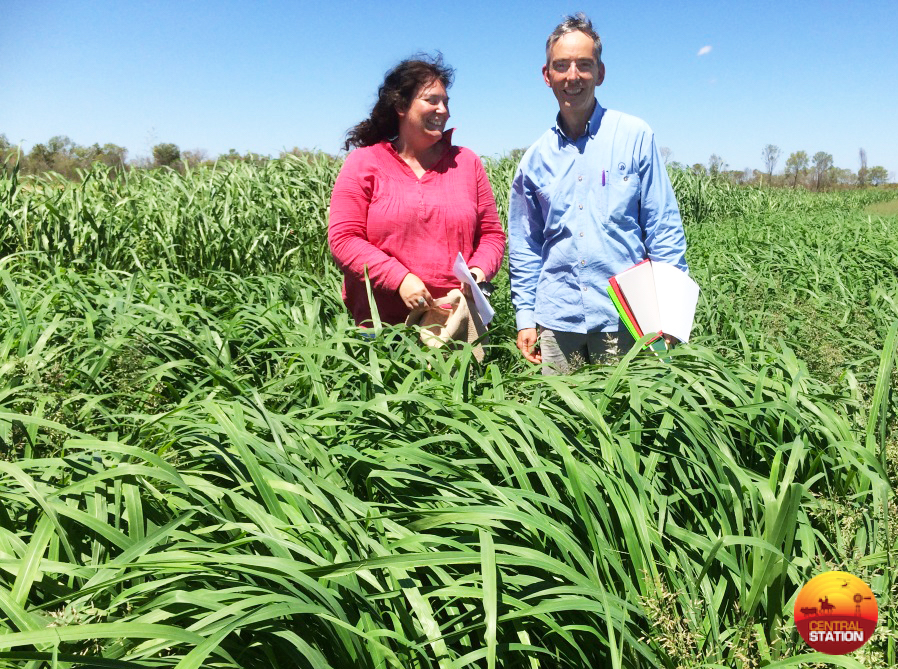 DAFWA’s Geoff Moore and Carol Harris from NSW DPI with a new panic grass variety (Megamax 059) at Kilto Station.
DAFWA’s Geoff Moore and Carol Harris from NSW DPI with a new panic grass variety (Megamax 059) at Kilto Station.
Hi, I am Geoff Moore, part of the Mosaic Agriculture team with the Department of Agriculture and Food, Western Australia’s Northern Beef Futures (NBF) project.
The project team includes two pasture agronomists – Clinton Revell and me and technical support for the project. We also work closely with weed scientist Christine Munday from the Department of Parks and Wildlife.
You may be thinking – what is mosaic agriculture? It refers to small areas of intensive agriculture in an extensive rangelands setting. For example, a centre pivot irrigation system or group of centre pivots, surrounded by rangelands.
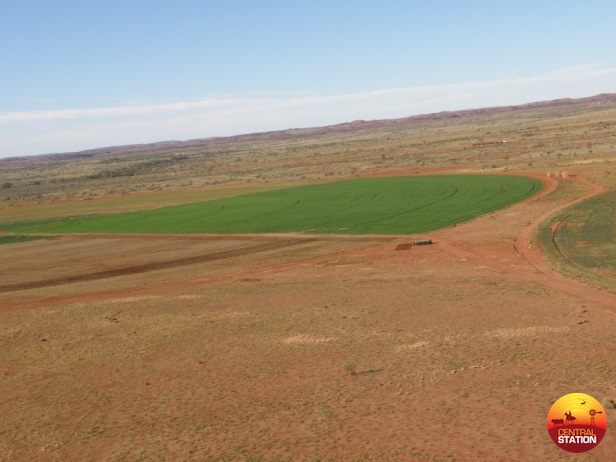
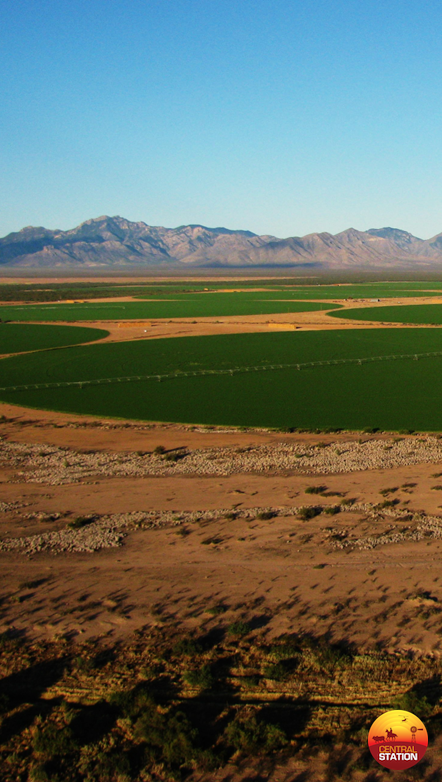
The team has been working in northern Western Australia for two years now, gaining local information on the costs and benefits of irrigated forages for beef production systems. We have met some great characters, made new friends and experienced the many facets of the environment – the vast landscapes, electrical storms, torrential rain and sweltering midday sun, even at 7am when it’s already over 100°F (38°C) on the old scale!
There have been a few challenges, with ubiquitous grasshoppers, birds appearing whenever there is grain, and the overly-friendly termites which we cope with as best we can.
There is no doubt the north has great growing conditions –when you add water with year-round warm-to-hot temperatures and an abundance of sunlight, the potential productivity is high!
Our role working with the northern beef industry is to identify productive pasture, fodder and crop options for both irrigated and dryland mosaic agriculture, with a particular emphasis on feed quality. The data from our field trials helps with the economic analysis and the modelling of different production systems to bring cattle up to specification for higher value markets.
We have run a series of agronomy trials under commercial centre pivots at various locations, including the Fitzroy Valley and Woodie Woodie in the Pilbara (200km east of Marble Bar), and have recently started monitoring a stand and graze system south of Broome.
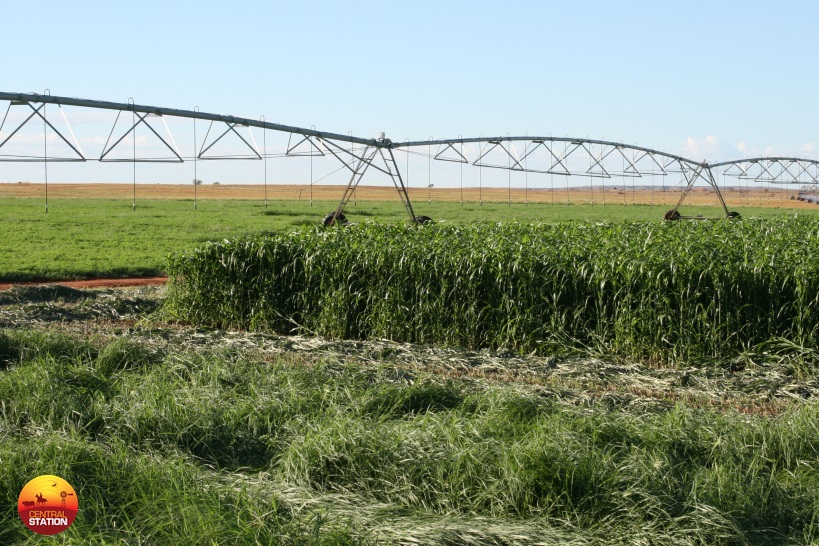
The vast majority of the land used for beef production in northern Western Australia is under pastoral lease, and pastoral stations are required to obtain a permit from the Pastoral Lands Board (PLB) to grow plant species which are not Indigenous (not native) to Western Australia. This requirement is in place to minimise the risk of introduced pasture, fodder and crop plants having unwanted or adverse effects on the natural environment.
There is a lack of local data on non-Indigenous species, so the mosaic agriculture team has established a network of field nursery trials in key northern beef environments to assess whether a wide range of grasses and legumes will persist and/or spread. This explains our name for these as ‘weed risk trials’.
These trials were established under irrigation to simulate the worst case scenario, like when a cyclone comes through, leaving significant rainfall. The trials are now well established – most species have set seed and the irrigation has been turned off. The results to date highlight the competitiveness of the native vegetation. For instance, woody shrubs actively grew over the last dry season, while all of the sown species were either highly moisture-stressed or died.
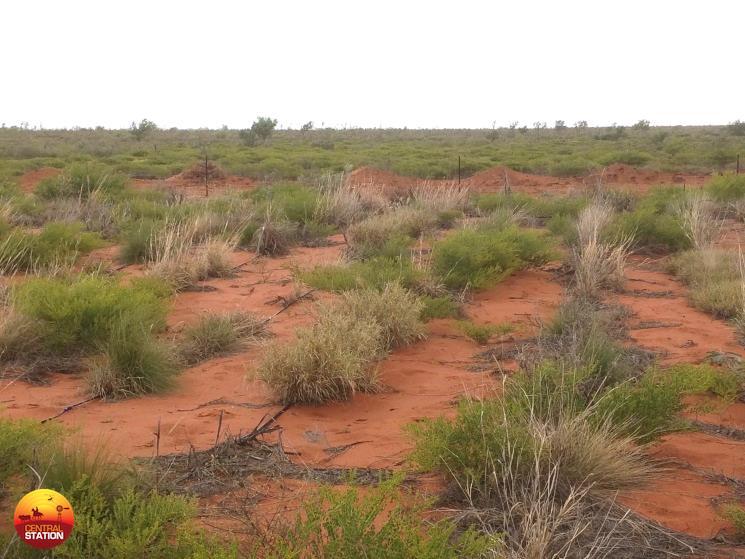
This year, we have been slowed by the ‘big wet’ as access to some sites has not been possible due to flooded roads and river crossings. Although frustrating at times, this amount of rainfall is great for the pastoral industry, especially in the Pilbara, which has experienced a couple of tough, dry years.
Our challenge moving forward is to work with industry to understand the economic contribution that mosaic agriculture can make to the beef industry, optimise the performance of irrigated fodder and grazing systems, and consider the role of multi-purpose crops which can both generate cash and provide cattle feed.
You can read more about mosaic agriculture and the Northern Beef Futures project on the Department of Agriculture and Food’s website.
The Department of Agriculture and Food’s $15 million Northern Beef Futures (NBF) project is an investment by the State Government’s Royalties for Regions program.
